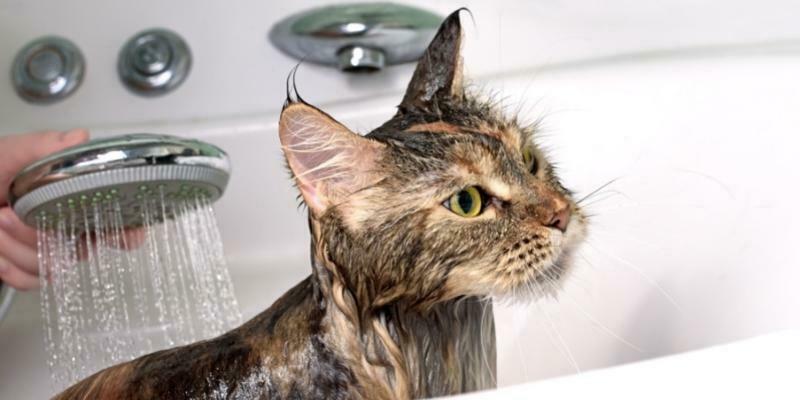| |
|
|
| |
Mira Mar Veterinary Hospital
|
|
| |
|
|
| |
|
|
| |
|
|
|
|

|
| |
September Newsletter
|
|
| |
|
|
| |
Hello and welcome to our September Newsletter!
Allergy season is just kicking off, so if you have an itchy pet at home, you may find some of the articles in this newsletter very informative. There are lots of great new medications available for allergic pets with less side effects and better results, so please give us a call if you think your pet needs our help.
In clinic news this past month we've had some super new external and internal photos taken of our clinic! Many thanks to Kirsten from Photographica for working with us to get these images, we think they look great!
For the full gallery please visit our website via the button below:
|
|
| |
|
|
| |
CLICK HERE FOR PHOTO GALLERY
|
|
|
|

|
| |
AUGUST PUPPY PRESCHOOL GRADUATES
|
|
| |
|
|
| |
Our August group of Puppy Preschool graduates are pretty cute, don't you think?
Congratulations to Bonnee, Finn, Lucas, Maisey and Nala on graduating with flying colours and being as cute as can be!
If you think your pup could benefit from Puppy Preschool, please give the clinic a call on 98415422. |
|
| |
|
|
| |
CALL NOW
|
|
|
|

|
| |
Bad habits?
|
|
| |
|
|
| |
When owners are asked about their beloved dog’s most annoying habits, excessive paw-licking and bottom-scooting rate highly! But did you know that these irritating behaviours can actually indicate underlying allergies or other health problems?
Paw licking
If your pet is obsessively licking at a single paw, it’s important to check that area for any visible wounds or swellings. A swelling between the toes could be a cyst, tumour or foreign body (such as an embedded grass seed or thorn). Dogs may also lick at their paws if they are suffering from painful arthritis of those joints.
However, if your pet is licking at several of their paws frequently, it could indicate that they are suffering from an underlying allergy. Allergies that tend to affect the paws include:
- Contact allergies, where direct contact with certain plants or chemical substances irritates your pet’s feet
- Atopy, where your pet’s skin reacts to certain airborne dust mites, pollens or moulds
- Food allergy, when certain proteins trigger skin inflammation
Occasionally, dogs can also lick their paws obsessively due to behavioural issues, such as anxiety, however this diagnosis usually requires medical testing and treatment trials to exclude the more common reasons listed above.
Bottom scooting
Bottom scooting is a pretty common, unpleasant habit of dogs, and can be caused by a number of reasons, such as:
- Blocked anal glands
- Bottom irritation from intestinal worms, such as tapeworm
- Irritation of the vulva in females, due to urinary tract infections or skin fold problems
- Allergies such as a contact allergy, atopy or food allergy causing skin irritation
If your pet is licking at their paws or scooting their bottom, it’s best to book an appointment for further assessment by our skin-savvy vets.
Once we identify the underlying cause of your pet’s irritation, we can treat the problem and banish that bad habit! |
|
|
|

|
| |
Three things NOT to do with your pet’s sore ear!
|
|
| |
|
|
| |
Ear infections are common in pets. If your pet ever shows symptoms of a sore, irritated, red or mucky ear, here are three things that we would not recommend trying at home.
1. Trying to treat the ear yourself
Unfortunately, the desire to quickly help our pets can lead some owners to administering unsuitable substances into their pet’s sore ear, ranging from coconut oil (which is unlikely to cause harm, but will not treat yeast or bacterial infections), to natural antibacterials, such as tea tree oil, which can be toxic to your pet or permanently damaging to the middle ear.
For your pet’s safety and comfort, we’d recommend only administering ear products that have been prescribed for your pet by our vets.
2. Hoping the issue will self-resolve
It’s best to have any ear infections in your pet treated promptly. The longer your pet has an ear infection, the more painful, swollen and mucky their ear will become, making treatment more difficult thereafter. Prolonged ear infections can also cause your pet’s eardrum to rupture, worsening their symptoms and pain, and complicating treatment.
3. Using another pet’s leftover medication
If one of your other pets has previously had an ear infection, you should never use their leftover ear ointment for the pet with a sore ear now. Despite both pets having a sore ear, the same treatment may not be suitable for both animals, as ear infections can be caused by varying types of bacteria or yeast, for which we select different medications. Certain treatments should also be avoided if a pet is suspected to have a ruptured eardrum.
So, what is the best option for your pet’s sore ear? It’s consulting with our exp-ear-ienced veterinary team of course! We can examine your pet’s ear, ascertain the underlying cause and select the most appropriate treatment to fix their ear-ritating issue – quickly and safely. |
|
|
|

|
| |
Allergy first aid
|
|
| |
|
|
| |
Has your pet ever suffered from an acute (sudden) allergy-related skin irritation? Symptoms can involve:
- Generalised allergic reactions, such as hives (raised, red skin bumps over your pet’s body), or
- More localised skin irritations such as red, itchy paws or belly, or an area of oozing, inflamed and sore skin, known as a ‘hot spot’
What causes acute skin irritations in pets?
Insect bites or stings can trigger acute skin inflammation symptoms like those listed above, or even serious anaphylactic reactions where affected pets may vomit, develop dangerously low blood pressure, suffer breathing difficulties or collapse.
Pets also commonly develop sudden skin irritations due to other allergies, such as:
- Food allergies, usually involving certain proteins
- Atopy (environmental allergies)
- Contact allergies, including plants such as inchplant
- Flea allergy dermatitis (where pets suffer an allergic reaction to flea saliva)
What should I do to help my pet?
If your pet is showing symptoms of an acute skin flare-up, the best course of action is:
- If your pet has been in contact with an irritating material (such as a certain grass), then it can help to gently wash them with cool water to remove any remaining irritants and cool their skin
- If your pet has previously been diagnosed with allergies and has been prescribed medications such as oral antihistamines (which are generally safe at veterinary-recommended dosages), a medicated shampoo or topical/oral steroids, you can administer these according to the label instructions
- Phone our team for further advice! If your pet is uncomfortable, we will advise an appointment for assessment and prescription of some prompt symptomatic relief
Of course, if your pet ever shows more serious allergic reaction symptoms, such as difficulty breathing, then you should seek emergency veterinary care immediately.
Ask our friendly team if you have any further questions or concerns about allergies in your pet! |
|
|
|

|
| |
Too hot to handle
|
|
| |
|
|
| |
Have you heard of ‘hot spots’ in dogs? These nasty skin lesions can go from zero to 100 in the scratch of a paw and can be downright painful. Here’s how to spot a hot spot and what we can do about it.
What is a hot spot?
Hot spots, officially known as pyotraumatic dermatitis, are localised areas of skin inflammation caused by self-trauma (i.e. your pet vigorously scratching or chewing at the area). They appear as red, oozing skin lesions with associated hair loss, and are often painful to touch.
What causes hot spots?
Hot spots are triggered by an underlying irritation of the associated skin (such as an allergic reaction, insect bite or area of fur matting) and can develop very quickly once your pet starts scratching or chewing at that area.
They are most commonly seen on the head or face (as a result of the pet scratching at an ear irritation), or around the tailbase (due to flea bite irritation), although they can occur in other areas too.
Breeds with thick coats or dense undercoats, such as golden retrievers, labradors, german shepherds and collies are most predisposed to developing hot spots.
How is a hot spot treated?
We will examine your pet’s skin and the area of the hot spot to determine its severity and whether a secondary bacterial infection is evident.
Wherever possible, it is a good idea for the affected area to be clipped of fur, as this will expose the entire lesion so that it can be gently cleaned with an antibacterial solution and left to dry out. In some cases, clipping may be too painful for a pet, and they will require sedation.
Following clipping, most pets can be treated at home with gentle wound cleaning, and topical and oral corticosteroids to relieve inflammation, although some may also require additional antibacterial therapy or pain relief. Some dogs may require an elizabethan collar to prevent further scratching of the hot spot.
If you have any further questions about this hot topic, or other pet skin problems, ask our knowledgeable veterinary team! |
|
|
|

|
| |
The mystery of the missing fur
|
|
| |
|
|
| |
Like crop circles in fields, thinly-furred patches on your cat may seem to appear without an obvious cause! But never fear - our knowledgeable vets are here to explain the phenomenon of fur loss in cats. Here are a few things we can tell you upfront about mysteriously-missing feline fur.
1. In most cases, the fur has been broken off or pulled out (rather than falling out)
When cats present to us with symptoms of unexpected fur thinning or fur loss, it often appears as either a bald belly or “mown” (shortened) fur patches down their lower back. The associated skin may be red, oozing or scabby, or may appear fairly normal.
The most common reason for fur loss in cats is overgrooming, i.e. licking or chewing at their fur until it breaks off. Sometimes, owners will notice their pet grooming excessively, but in some cases, the cat will do this secretly when no one is watching.
2. Fleas are one of the most common causes of overgrooming, even if you haven’t seen any!
Cats most commonly over-groom due to skin irritation, and one of the most common causes of skin irritation in cats is fleas. Cats will often groom away any visible fleas before you can spot them, but cats who are allergic to flea bites can remain itchy and irritated long after the flea is removed.
Other potential causes of skin irritation in cats include food allergies, environmental allergies, fungal infections and mites.
3. Less commonly, overgrooming can be due to behavioural issues
If we have ruled out any obvious causes of skin irritation in your cat, we may consider a behavioural cause of overgrooming, such as anxiety.
So, if you notice any unexplained fur thinning on your cat, it’s best to consult our vets, a.k.a. Dermatological Detectives, for some savvy diagnosis and treatment! |
|
|
|

|
| |
Animal News In Brief
|
|
| |
|
|
| |
Image: Cavoodle dog
Hear them roar, tiger numbers soar!
A revision of the International Union for Conservation of Nature’s (IUCN) Red List - the most comprehensive source of global plant, animal and fungi conservation and extinction status - has shown a positive increase in tiger population numbers since the last assessment in 2015. After a century of decline, wild tigers have been slowly increasing throughout India, Nepal, Bhutan, Russia and China, says the World Wildlife Fund. Thanks to conservation efforts across Asia, tiger populations have increased by a whopping 40%, as wild tiger numbers are now estimated to be between 3,726 and 5,578. Due to agriculture and human settlement, tiger habitats are threatened. Tigers and their prey are also at ongoing risk of poaching, meaning habitat protection is essential. Although they are still endangered, with proper protection maintained, the IUCN say that “recovery [for wild tiger populations] is possible.”
Read more about wild tiger populations from The Guardian.
-----
The guidance behind the guide dogs
Ever wondered what training goes on behind the scenes to prepare guide dogs for a life of superhero support and companionship for vision-impaired and blind Australians? The TODAY show has broadcast the puppy training, hosted by Petbarn, where very small labrador puppies took on the challenge of the ‘dogstacle’ course. The course aimed to teach the dogs confidence and encourage a feeling of ease with their handler. It also used hurdles to teach the pups proprioception (awareness of the body and its movement), as well as a path of toys on either side for lessons of impulse control (to avoid distractions in adult doggo life, like other dogs or food on the ground). For the length of July, Petbarn ran an appeal to raise enough funds to train 20 seeing eye dogs. But as training just one dog in its entirety costs around $55k, Petbarn put their fundraising goal at $1m. From the kindness of their community’s donations, the fundraiser’s outcome exceeded the Petbarn team’s goal and raised $1,169,890 - that’s over 23 seeing eye dogs!
Learn more about guide dog training from TODAY.
-----
Cavoodles in high demand
A new report from Petbarn has revealed which pooches topped the charts for the most popular dog breeds in Australia from 2016 to 2021. In the report’s review of over 750,000 puppies, the cavoodle conquered the title as Australia’s most popular pooch. Cavoodles are a cross between a poodle and a Cavalier King Charles spaniel - and the little teddy-bear lookalikes are everywhere! Poodle-cross breeding only began in the 1980s, thanks to Wally Conron, an Australian breeding manager at the Royal Guide Dogs Association of Australia, who bred a labrador with a poodle for a blind woman, whose husband was allergic to dog hair. From the breeding’s success, the labradoodle was born and now also makes the top 100 list of most popular Australian dog breeds, alongside the cavoodle and six other poodle-cross breeds. The Pet Pulse report even found that one in every five new puppies born in Australia today is a poodle-cross! With such friendly natures and allergy-friendly coats, who wouldn’t want a real-life teddy-bear pooch as their furry family member?
Read more about why cavoodles are such popular dogs from the Margaret River Mail. |
|
|
|

|
| |
Plea to preserve hippo populations
|
|
| |
|
|
| |
Hippos are a semi-aquatic wonder of the world. But despite their behemoth weight and size, the cherished hippopotamus is also a severely vulnerable creature.
After being added to the IUCN Red List of Threatened Species in 2016, and with only 115,000-130,000 hippos left in the world, ten west African countries have recently demanded that the hippopotamus be recognised as one of the most endangered animals and be given the highest level of protection from ongoing threats - in particular, humans.
Human poachers, who capture hippos for commercial trading, hunting trophies and ivory (found in the hippo’s canine teeth), are one of the leading causes of declining hippo populations.
The decision of whether hippos will receive this protection will be in the hands of CITES, the Convention on International Trade in Endangered Species of Wild Fauna and Flora, at their next conference later this year.
If CITES do decide to reclassify the hippo as the highest level of endangered, as per the strong demand, all international trade of any hippo ivory or body part will be completely banned.
Unfortunately though, poachers aren’t the only cause of falling hippo populations. Over the last 20 years, droughts, habitat loss and degradation due to climate change have seen a substantial impact on the freshwater-reliant hippo’s survival.
Meanwhile in Australia, the recent 2,000 page State of the Environment report has declared that Australia is in the middle of an extinction crisis. With such intensifying weather extremes, Australian animals are finding that fresh-drinking water and secure habitats are increasingly hard to come by.
Although humans are quickly advancing in conservation and technology, it just isn’t fast enough to keep up with our rapidly declining environment. In order to prevent further devastation, climate change issues must be actioned immediately on a government level. Without sufficient funding and planning, these critical problems cannot be sufficiently addressed.
Whether it be African wildlife or our own back home, we “hippopota-must” take drastic action to impede further extinction.
Read more about hippo population decline from The Guardian. |
|
|
|
| |
This email contains comments of a general nature only and is not intended to be a substitute for professional veterinary advice. It should not be relied on as the basis for whether you do or don't do anything.
All content © PetPack 2022 |
|
|
|
[Footer]
|